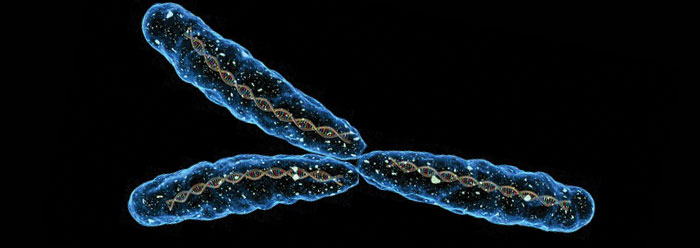A recent comprehensive analysis compared the human Y chromosome with the chimpanzee Y chromosome, and the researchers found that they were “remarkably divergent.”1
The Y chromosome is found only in males and contains many genes that specify male features, as well as genetic and regulatory information that is expressed throughout the whole body. In a study published in the January issue of Nature, a large team of scientists encountered so many unforeseen differences in the DNA sequences of the human and chimp Y chromosomes that the research took much longer than they had originally anticipated. Among their discoveries were interesting features unique to certain “sequence classes” within each chromosome.
Most of their findings do not fit well with the often-repeated erroneous statement that humans and chimps are 98 percent similar, nor with the more general hypothesis that they share a common ancestor.2 One sequence class within the chimpanzee Y chromosome had less than 10 percent similarity with the same class in the human Y chromosome, and vice versa. Another large class shared only half the similarities of the other species, and vice versa. And one whole class on the human Y chromosome “has no counterpart in the chimpanzee MSY [male-specific Y chromosome].”1
Under evolutionary assumptions of long and gradual genetic changes, the Y chromosome structures, layouts, genes, and other sequences should be much the same in both species, given the relatively short—according to the evolutionary timeline—six-million-year time span since chimpanzees and humans supposedly diverged from a common ancestor. Instead, the differences between the chromosomes are marked. R. Scott Hawley, a genetics researcher at the Stowers Institute in Kansas City who wasn’t involved in the research, told the Associated Press, “That result is astounding.”3
The Nature paper expressed the mismatch between this data and standard evolutionary interpretations in a more muted tone: “Indeed, at 6 million years of separation, the difference in MSY gene content in chimpanzee and human is more comparable to the difference in autosomal gene content in chicken and human, at 310 million years of separation.”1 Autosomes are the chromosomes other than the X and Y.
So, the human Y chromosome looks just as different from a chimp’s as the other human chromosomes do from a chicken’s. And to explain where all these differences between humans and chimps came from, believers in big-picture evolution are forced to invent stories of rapid wholesale rearrangements, and rapid generation of both new gene-containing and regulatory DNA.
But since each respective Y chromosome appears fully integrated and interdependent with its host organism, the most logical conclusion is that humans and chimpanzees were each specially created as distinct creatures.
References
- Hughes, J. F. et al. Chimpanzee and human Y chromosomes are remarkably divergent in structure and gene content. Nature. Published online January 13, 2010.
- Tomkins, J. 2009. Human-Chimp Similarities: Common Ancestry or Flawed Research? Acts & Facts. 38 (6): 12.
- Borenstein, S. Men More Evolved? Y Chromosome Study Stirs Debate. Associated Press, January 13, 2010.
* Mr. Thomas is Science Writer at the Institute for Creation Research.
Article posted on January 26, 2010.




